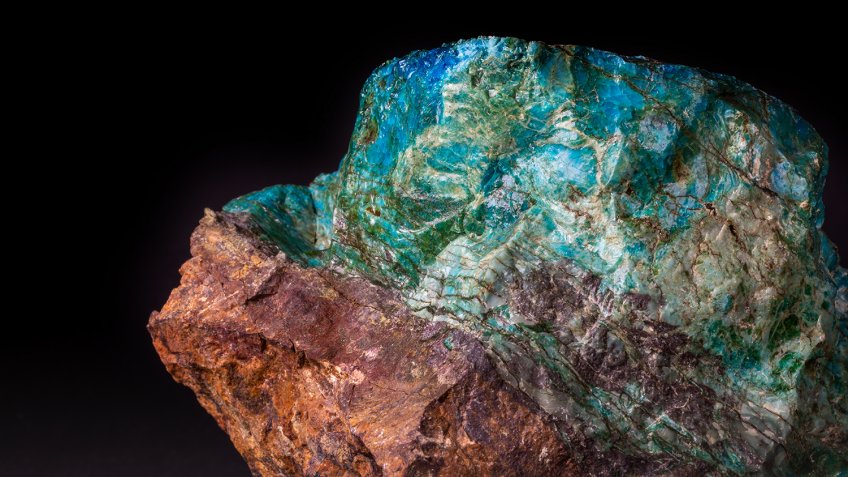Every citizen of Israel believes this stone is a country's national treasure. The mystery of stone formation is, however, unclear yet - completely identical minerals in nature do not exist; each sample is unique. This mineral has also been known under different names, but the most common one is Eilat stone.
This green-blue coloured gem-stone was first mentioned back in Biblical times. Some Israelis still think that deposits of Eilat stone are the King Solomon's Mines. As the legend says, the King of the United Kingdom of Israel, was a mighty and rich ruler. According to the Scripture, precious metals and minerals were brought to Solomon from two different locations. But no one has yet managed to draw a parallel between the ancient and modern descriptions of the mentioned territories. As of now, the only place in the world where Eilat stone can be found is Eilat, a port city at the northern tip of the Red Sea. During King Solomon's reign, this mineral was extracted and sold in massive amounts, thus heavily contributing to the financial stability of the Kingdom.
Eilat stone is a heterogeneous mixture of several secondary copper minerals. These include malachite, azurite, turquoise, and chrysocolla. Eilat stone was also the first stone in the history of humankind people learnt how to extract copper from. And copper was highly valued in those far away times. Money received from mineral sales were sufficient to build the first-ever temple in Jerusalem. At the same time, unique jewellery items made of this stone were kept only in treasure houses of the King.
King Solomon was mostly famous for his wisdom, and Eilat stone, which the ruler worshipped so much, people started associating with this quality. Thus, this mineral is particularly advised to those who need to make a choice or not sure which decision they should take.
In our age, development of Eilat stone deposits was recommenced in the middle of the 20th century. Soon extraction works were, however, stopped due to the low profitability and the depletion of reserves. In the 70s, commercial exploitation of the mineral was resumed again, and a large processing factory was built. This location is now very popular with tourists since they can buy samples of the stone knowing they are not fakes. In the area where the Eilat stone deposit is situated, a national park was opened. Within its territory, all kinds of geological exploration are totally prohibited.
Eilat stone is not considered a precious stone, but it is of high value due to being very rare. Moreover, extraction of the mineral might be stopped soon, as its reserves are likely to become depleted in the nearest future. Both the prices and demand on the stone, as a result, will sky-rocket.
If one does not want to buy a fake, there is a rule to remember - Eilat stone does not stick to the tongue. It is therefore enough to touch the specimen with a tip of the tongue to determine whether it is a real or an artificial stone.

